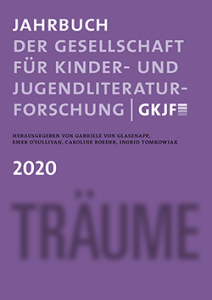Schreiben lernen in der DDR
Kinder- und Jugendliteratur von Studierenden am »Institut für Literatur ›Johannes R. Becher‹«
DOI:
https://doi.org/10.21248/gkjf-jb.58Abstract
Artikelbeginn:
[English title and abstract below]
An Kinder- und Jugendliteratur (KJL) herrschte in der DDR, die ja bekanntlich in vielen Bereichen durch Mangelwirtschaft gekennzeichnet war, tatsächlich kein Mangel. Sie wurde vom Staat gefördert und unterstützt, weil sie als wichtiges Instrument der sozialistischen Erziehung von Kindern und Jugendlichen galt (vgl. Lüdecke 2002, S. 434). Insofern besaß die KJL in der DDR einen vergleichsweise höheren gesellschaftlichen, politischen und künstlerischen Stellenwert als in der alten Bundesrepublik. Auch war die Grenze zwischen AutorInnen, die für eine erwachsene und eine kindliche bzw. jugendliche Leserschaft schrieben, nicht so strikt gezogen, wie man dies aus der Bundesrepublik kannte.
Learning to Write in the German Democratic Republic (GDR)
Children’s and Young Adult Literature at the »Johannes R. Becher« Institute for Literature
There was no shortage of children's and young adult literature in the German Democratic Republic (GDR )—it was promoted and supported by the state because it was an important instrument in the socialist education of children and young adults. Relative to this high status, it is not surprising that many of the best-known authors of children's and young adult’s books in the GDR studied at the renowned »Johannes R. Becher« Institute for Literature in Leipzig. This first, and, for a long time, only institute for creative and literary writing in German speaking countries was founded in 1955 and mandated with the task of training socialist writers. It was closed after German reunification in 1990 but was incorporated in 1995 into the University of Leipzig as the Leipzig Institute for Literature. In this article, an overview of the structure, tasks and goals of the Johannes R. Becher Institute is given, and selected texts for children and young adults that were written by its students are examined. It also demonstrates how these texts can be socially and aesthetically classified within the framework and along the lines of the development of the socialist state.
Downloads
Veröffentlicht
Ausgabe
Rubrik
Lizenz
Copyright (c) 2021 Jahrbuch der Gesellschaft für Kinder- und Jugendliteraturforschung

Dieses Werk steht unter der Lizenz Creative Commons Namensnennung - Nicht-kommerziell 4.0 International.





